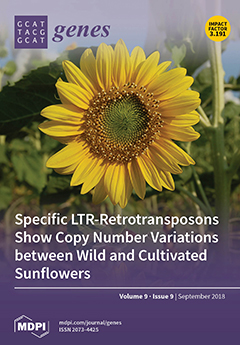Phytochrome-interacting factors (PIFs), as the basic helix–loop–helix (bHLH) transcription factors, are the primary signaling partners for phytochromes (PHY) that play a key role in PHY-mediated light signal transduction. At present, there are few studies on PIFs in fruit trees. In order to clarify the status of PIFs in grapevines, we identified members of the grape PIFs family and conducted phylogenetic and expression analysis. We identified PIF1, PIF3, PIF4, and PIF7 in PIFs families of the grapevine (
Vitis vinifera L.), which were distributed on four different chromosomes with similar gene structures. Except for the closer relationship with PIF1 of citrus, PIFs of grape were distant from the other fruit species such as apple, pear, peach, and strawberry. The
VvPIFs (except
VvPIF4) were located in the syntenic block with those from
Arabidopsis thaliana,
Solanum lycopersicum, or
Citrus sinensis. In addition to PIF1, all PIFs in grapevines have conserved active PHYB binding (APB) sequences. VvPIF1 has a conserved PIF1-specific active PHYA binding (APA) sequence, while amino acid mutations occurred in the specific APA sequence in VvPIF3. Interestingly, two specific motifs were found in the PIF4 amino acid sequence. The photoreceptor-related elements in the
VvPIFs promoter region were the most abundant. PIF1, LONG HYPOCOTYL 5 (HY5) and PIF3, PIF4, GIBBERELLIC ACID INSENSITIVE 1 (GAI1) may interact with each other and participate together in light signal transduction. The relative expression levels of the
VvPIFs showed diverse patterns in the various organs at different developmental stages, of which
PIF4 was most highly expressed. Prior to maturation, the expression of
PIF4 and
PIF7 in the skin of the different cultivars increased, while the expression of all
PIFs in the flesh decreased. The transcription level of
PIFs in grape leaves was sensitive to changes in lighting and shading. Shading treatment was beneficial for enhancing the transcription level of
VvPIFs, but the effect on
VvPIF3 and
VvPIF4 was time-controlled. We concluded that PIFs in grapevines are both conservative and species-specific. The identification and analysis of grape PIFs could provide a theoretical foundation for the further construction of grape light regulation networks.
Full article






